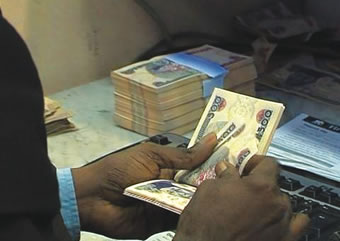
The second quarter GDP figures for the year 2017 were recently released by the NBS and pointed towards an end to the recession after five consecutive quarters of contraction. Although this comes as good news for the economy at large, there is still need to remain cautiously optimistic. The real economy is yet to feel the impact and with a growth rate of 0.6% y/y against a population growth rate of 3.0%, we are not completely out of the woods.
What You Need To Know
Following analysis of the national accounts, the oil economy improved significantly to a growth rate of 1.6% y/y from a steep contraction of -15.6% recorded in the first quarter of the year. It is worth mentioning that the growth figure for oil GDP for the previous quarter was revised and the possibility of a repeat would not be alarming. However, let’s live in the moment and digest the data at hand. The pickup in oil GDP is largely due to improved oil production. At some point in Q1, oil production hit 1.8mbpd, there was some relief from pipeline vandalism and by extension oil leakages. Oil’s share of real GDP amounted to 8.9% in in the second quarter of the year and is now the fifth largest in the economy: it is topped in descending order by agriculture, trade, information and communications, and manufacturing. Through its linkages across other sectors, however, the indirect oil economy may be as large as 40% of GDP

The non-oil economy grew by 0.5% y/y compared with 0.7% recorded in Q1. This shows a minimal slowdown in its growth. Perhaps, the anthem on diversification needs to become louder and also more action as opposed to talk is required. The major drivers were, agriculture as well as finance and insurance.
Agriculture grew by 3.0% y/y compared with 3.4% recorded in Q1. Crop production was its major driver, this segment accounts for 89% of agriculture GDP and it grew by 3.2% y/y. Rice, Maize and Soybeans have been on the FGN’s agenda in terms of improved output and import substitution. However, the performance of agriculture was the weakest for more than two years, and a disappointment in view of the reforms.
As for financial services, financial institutions posted double digit growth at 11.8% y/y in Q2 compared with 0.6% recorded in Q1. This growth is likely due to the introduction of NAFEX which boosted transactions significantly. NAFEX is an fx intervention window created by the CBN to boost fx liquidity for investors and exporters- this has been a positive for the market as the fx illiquidity Nigeria faced last year has subsided.
Trade, the second largest sector of the economy, again contracted, as it has every quarter since the first quarter of 2016. It is the most reliable measure of demand across all income levels. It is therefore safe to say that consumers’ confidence remains soft as most households have restructured their spending patterns to reflect the current economic realities and may not revise these patterns until their purchasing power improves. The general mind-set should be increased savings and investments as opposed to carless spending patterns.
 About The Writer
About The Writer
Chinwe Egwim is a seasoned Economist with specialisation in Public Finance, Macro Economics, Development Economics as well as Fixed Income analysis. She currently works in the Fixed Income & Macro Economic unit at FBN Capital (The Investment & Asset Management arm of FBN Holdings) where she handles frontier research problems for investment analysis in addition to producing policy-relevant economic and statistical research. Chinwe has over published over 200 published economic notes and has co-authored multiple investment research reports. She currently sits as a member of the faculty of Economists at the Nigeria Economic Summit Group (NESG). Connect with Chinwe on Instagram

